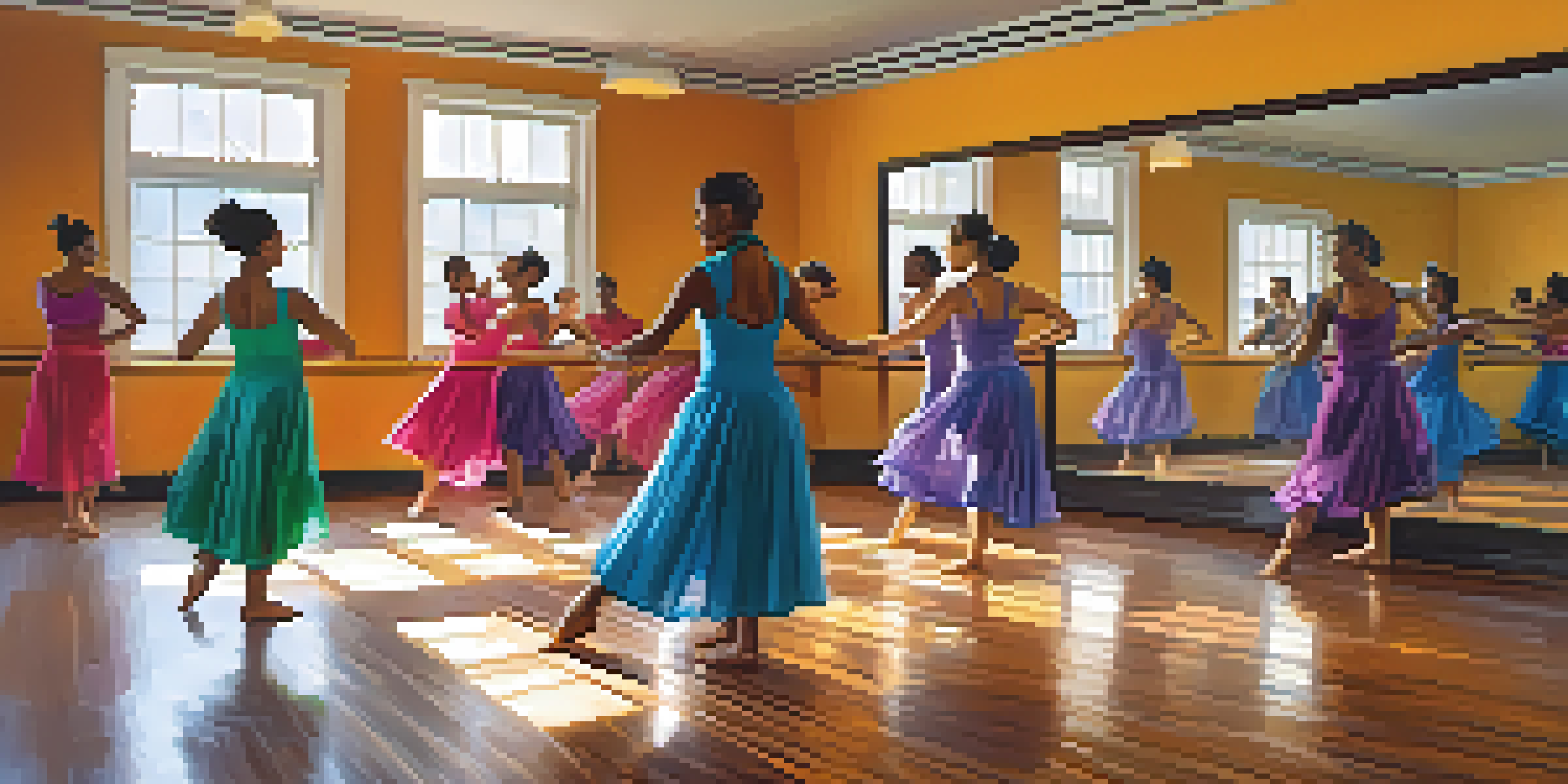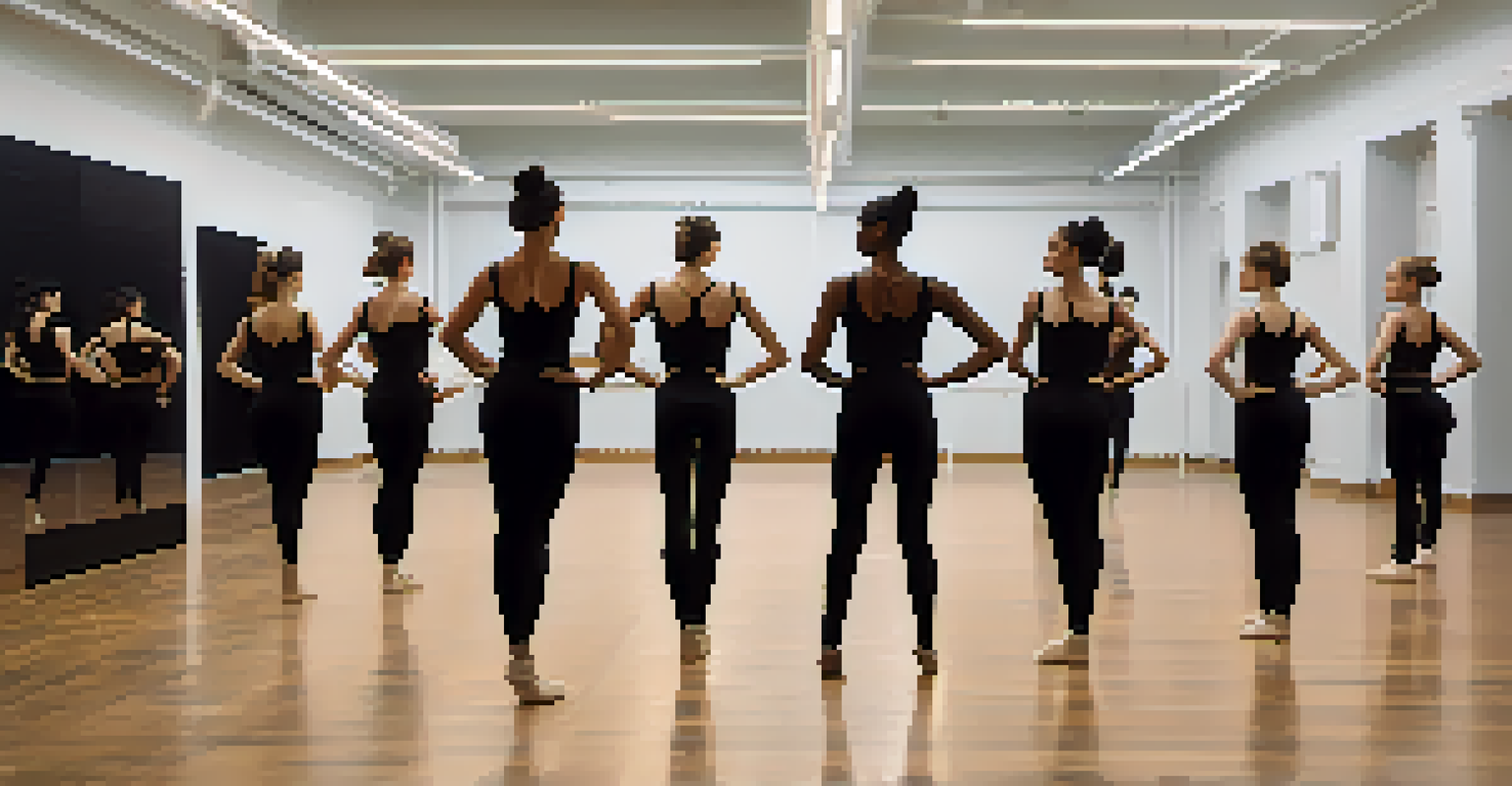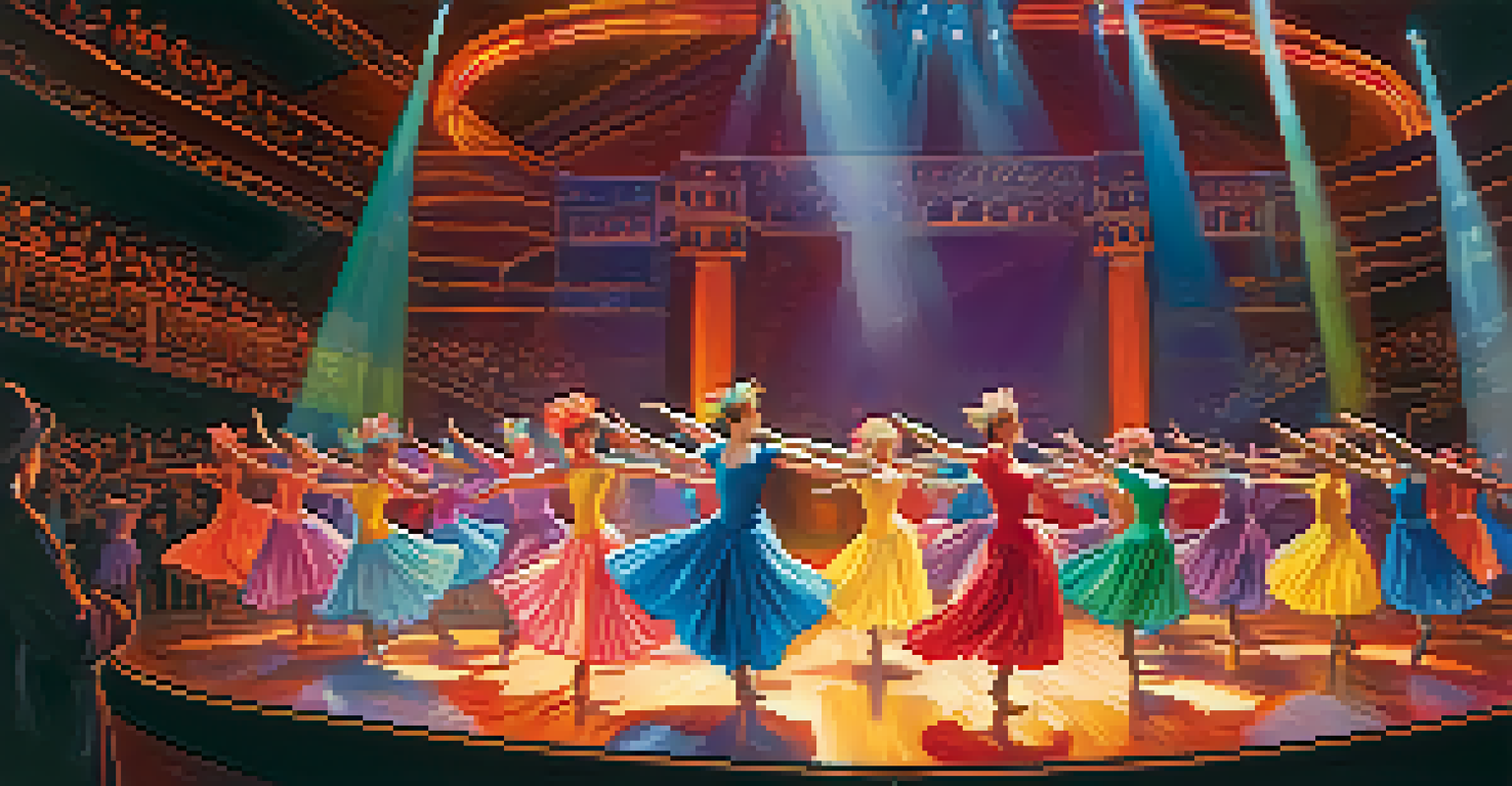The Creative Journey: Stages of Developing Choreography

Understanding the Concept: Starting Your Choreographic Journey
Every choreography begins with a spark of inspiration, often stemming from personal experiences, emotions, or a specific theme. This initial concept serves as the foundation for the entire piece, guiding the direction of your movements and the story you wish to tell. Consider it like the seed of a plant; with the right care and attention, it can grow into something beautiful and complex.
Dancing is like dreaming with your feet.
During this stage, it's vital to jot down your thoughts, ideas, and any visual images that come to mind. This brainstorming phase can involve drawing, writing, or even improvising movements. By allowing your creativity to flow freely, you’ll create a rich tapestry of ideas that can later be woven into your choreography.
As you refine your concept, ask yourself questions like, 'What emotions do I want to convey?' or 'What message do I want to communicate?' This self-reflection helps to clarify your vision and ensures that your choreography resonates with both you and your audience.
Research and Inspiration: Gathering Ideas for Movement
Once you have a solid concept, it's time to dive into research. This can involve watching dance performances, exploring various dance styles, or even studying visual art and music that align with your theme. By immersing yourself in different sources of inspiration, you can uncover unique movement qualities that will enrich your choreography.

Connecting with other dancers, choreographers, and artists can also spark new ideas. Sharing your thoughts and listening to their insights often leads to unexpected discoveries. Think of it as a collaborative brainstorming session—a melting pot of creativity where everyone's input helps to refine your vision.
Inspiration Fuels Choreography
Every choreography starts with a spark of inspiration that guides the movement and narrative.
Don’t forget to document your findings! Create a mood board, a playlist, or even a collection of video clips that resonate with your ideas. This visual and auditory inspiration will serve as a valuable reference as you begin to develop your choreography.
Movement Exploration: Experimenting with Your Ideas
With your concept and research in place, it's time to explore movement. This stage is all about experimentation—try out different styles, rhythms, and formations. Allow your body to instinctively respond to the music or the themes you’ve gathered. Remember, there are no wrong moves here; every attempt brings you closer to finding what feels right for your piece.
The only way to make sense out of change is to plunge into it, move with it, and join the dance.
Improvisation can be particularly helpful during this phase. Set aside time to dance freely, allowing your body to express the emotions and ideas you’ve been contemplating. You might be surprised by the original phrases and sequences that emerge when you let go of structure and simply move.
As you experiment, keep a journal or video log of your explorations. This documentation not only tracks your process but also helps you identify movement patterns that resonate with your choreography’s core message.
Structure and Form: Crafting the Choreography Framework
Now that you have a wealth of movement ideas, it’s time to start structuring your choreography. Think of this stage as building a house; you need a solid framework to support the creativity you’ve nurtured. Decide on the overall shape of your piece—will it be a narrative journey, a thematic exploration, or a showcase of technical prowess?
Create sections that will guide your audience through the piece. You might consider building a clear beginning, middle, and end, or opting for contrasting sections that highlight different emotions or styles. This structure will help maintain audience engagement while allowing your movement ideas to shine.
Research Enhances Movement Ideas
Diving into various sources of inspiration, including dance styles and artistic collaborations, enriches your choreography.
As you structure your choreography, don’t forget to incorporate transitions—those seamless shifts that connect one movement or phrase to the next. Smooth transitions not only enhance the flow of your piece but also create a more immersive experience for the audience.
Refinement: Polishing Your Choreography for Performance
After laying down the framework, it’s essential to refine your choreography. This is where the magic happens; you’ll focus on making each movement intentional and clear. Pay attention to details such as timing, alignment, and dynamics, ensuring that each dancer's intention aligns with the overall concept of the piece.
Gather feedback from trusted peers or mentors during this stage. Their fresh perspectives can highlight areas that may need further clarification or enhancement. Think of it as having a second pair of eyes that can help you see what you might have missed in your own creative bubble.
Rehearsals are crucial during this refinement phase. As you and your dancers practice, focus on building muscle memory and confidence, ensuring that each performance feels as vibrant and authentic as the last.
Rehearsals: Bringing the Choreography to Life
Rehearsals are where your choreography truly comes alive. This stage is all about collaboration and communication with your dancers. Encourage them to bring their unique interpretations to the movement while staying true to your vision, fostering a sense of ownership and creativity within the group.
During rehearsals, focus on not only the technical aspects but also the emotional delivery of each movement. This connection between the dancers and the choreography transforms a series of movements into a compelling performance. Think of it like cooking; the right ingredients and techniques blend to create a delicious dish.
Rehearsals Bring Vision to Life
Collaborative rehearsals focus on technical execution and emotional delivery, transforming choreography into a compelling performance.
As you prepare for performance, consider scheduling tech rehearsals to integrate lighting, music, and other elements. This holistic approach ensures that every aspect of your performance works in harmony to create a powerful experience for the audience.
Performance: Sharing Your Choreography with the World
The final stage of your creative journey is the performance itself. This is the moment when all your hard work, exploration, and refinement pays off. Embrace the excitement and nerves that come with sharing your creation, knowing that this is an opportunity to connect with your audience on a profound level.
As the lights dim and the music begins, remind yourself and your dancers to stay present. Focus on the joy of performing and the meaning behind each movement. This mindset not only enhances the performance but also allows for authentic connections with the audience, making the experience memorable for everyone involved.

After the performance, take time to reflect on the entire journey. Celebrate the successes, learn from the challenges, and cherish the memories created along the way. Every performance is a new opportunity to grow and evolve as a choreographer, so embrace each one with an open heart.